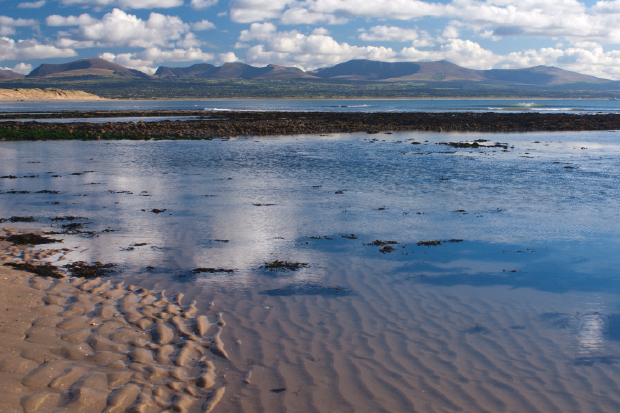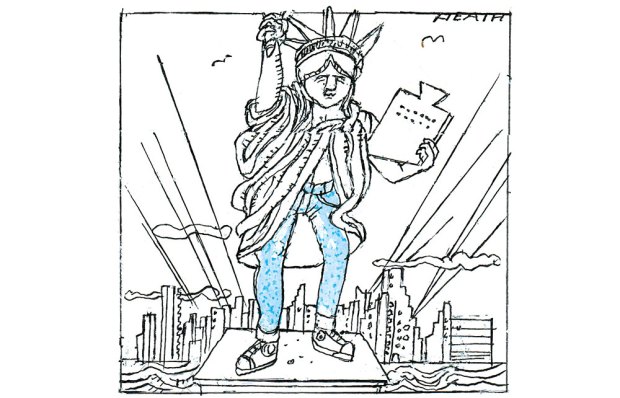We teased our friends by saying that our holiday would be on a far-away island. The Maldives, perhaps? No, Anglesey, off the northwestern tip of Wales. Mentally far-away, that is: but by train, it is only three and a half hours to Bangor, where we hired a car. Two mighty 19th-century bridges span the Menai Straits, with the fearsome currents known as the Swellies (regarded by Nelson as one of the greatest of all tests of seamanship). Cross them and the world seems to go into reverse. Time slows. You find yourself playing Scrabble. I never actually went to Anglesey when I was growing up but, once there, I slip into a world of idealised childhood — except that today groceries are delivered by Waitrose.
Anglesey is an outdoors place, brilliant for every kind of watersport — sailing, white water rafting, kite surfing. It’s got puffins, basalt stacks, beaches of what might be mistaken for Caribbean sand, some of which are empty. So why should we be so happy there? We’re indoor people; one of the children does own a tennis racket, but that’s the limit of our sporting ambitions. We like art galleries and opera — neither of which you find on Anglesey. Instead, you’re almost compelled to ramble over the cliffs, walk along sandy beaches, or watch the light play on the waters in which the Royal Charter went down with all hands in 1859. You gaze at distant Snowdon, wondering whether the clouds will clear from its brow — and feel glad for the blusterous island weather, which isn’t as wet as the mountains. You don’t really need anything else. As a child of the hippy era, I can sum it up in a word: peace.
There’s history here, too. Every other field seems to contain a burial chamber — a spectacular one overlooks Cable Bay. Did tribesmen emerge from the Iron Age village at Din Lligwy to fight the Romans? Bad news if they did: the tribesmen, despite human sacrifices by the Druids, comprehensively lost. Another invader came in the 1290s: Edward I, who built Beaumaris Castle. If you like castles, though, cross to Caernarvon: I did that a few years ago on a rigid inflatable boat (www.ribride.co.uk), which was awesome in the literal sense. Perishing as well, it being January.
One holiday, we went rock-pooling with a marine zoologist from the Anglesey Sea Zoo, which was fascinating. But this time we didn’t really move from the house. Then again, that house was Cae’r Borth. Although it’s on the books of Menai Holiday Cottages (www.menaiholidays.co.uk), this building pushes the definition of holiday cottage. You could probably fly to Mars in the sophisticated kitchen and the spine of the house is a passage hung with its owner Lord Boston’s family portraits. Cae’r Borth means ‘field by the harbour’, referring to a dock where the Victorian Bostons kept their large pleasure craft. It was a favourite site of the eighth baron, who built the house in 1965. With a book, or possibly a glass in your hand, you gaze over the sands of Lligwy Bay, almost summoning the energy to go for a walk — but not always succeeding. Dolce far niente is an Italian phrase which can, in the right mood, apply equally to Wales.
Got something to add? Join the discussion and comment below.
Get 10 issues for just $10
Subscribe to The Spectator Australia today for the next 10 magazine issues, plus full online access, for just $10.
You might disagree with half of it, but you’ll enjoy reading all of it. Try your first month for free, then just $2 a week for the remainder of your first year.














Comments
Don't miss out
Join the conversation with other Spectator Australia readers. Subscribe to leave a comment.
SUBSCRIBEAlready a subscriber? Log in